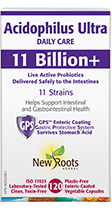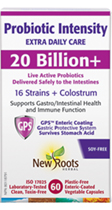Human Probiotics: Sowing the Seeds of Health
Have you ever tried introducing a nonnative grass seed or an exotic variety of flower to your lawn or garden, only to have the same old vegetation naturally rejuvenate itself year after year? The reason is these species are deep-rooted and suited to thrive in their environment.
When it comes to your intestinal microbiota, supplementation with probiotic strains of dairy, plant, and human origin all deliver their own unique health benefits. The trait that differentiates human-sourced strains is they are validated as resident probiotics isolated from healthy individuals. This means they populate the mucosal lining of the intestines, where they multiply in numbers; this process is referred to as “colony-forming.” Probiotics are consequently expressed as CFUs (colony-forming units) on product labels and literature.
A healthy balance of human-origin Lactobacillus strains to primarily populate the small intestine and Bifidobacterium species within the large intestine (colon) can support a strong foundation for digestive and immune-system health. Among the Lactobacillus species to look for are L. casei, L. paracasei, L. rhamnosus, L. reuteri, L. salivarius, and L. acidophilus. For the Bifidobacterium genus, B. infantis, B. bifidum, B. breve, and B. longum are among the pioneer probiotics essential for good health.
We’re still exploring the vast therapeutic potential for probiotics; when it comes to strain selection, a little human touch delivers.
 Gordon Raza, BSc
Gordon Raza, BSc
As the technical writer for Flourish, Gord shares his
unique perspective on natural health products, nutrition,
and active living.

 Stores
Stores


